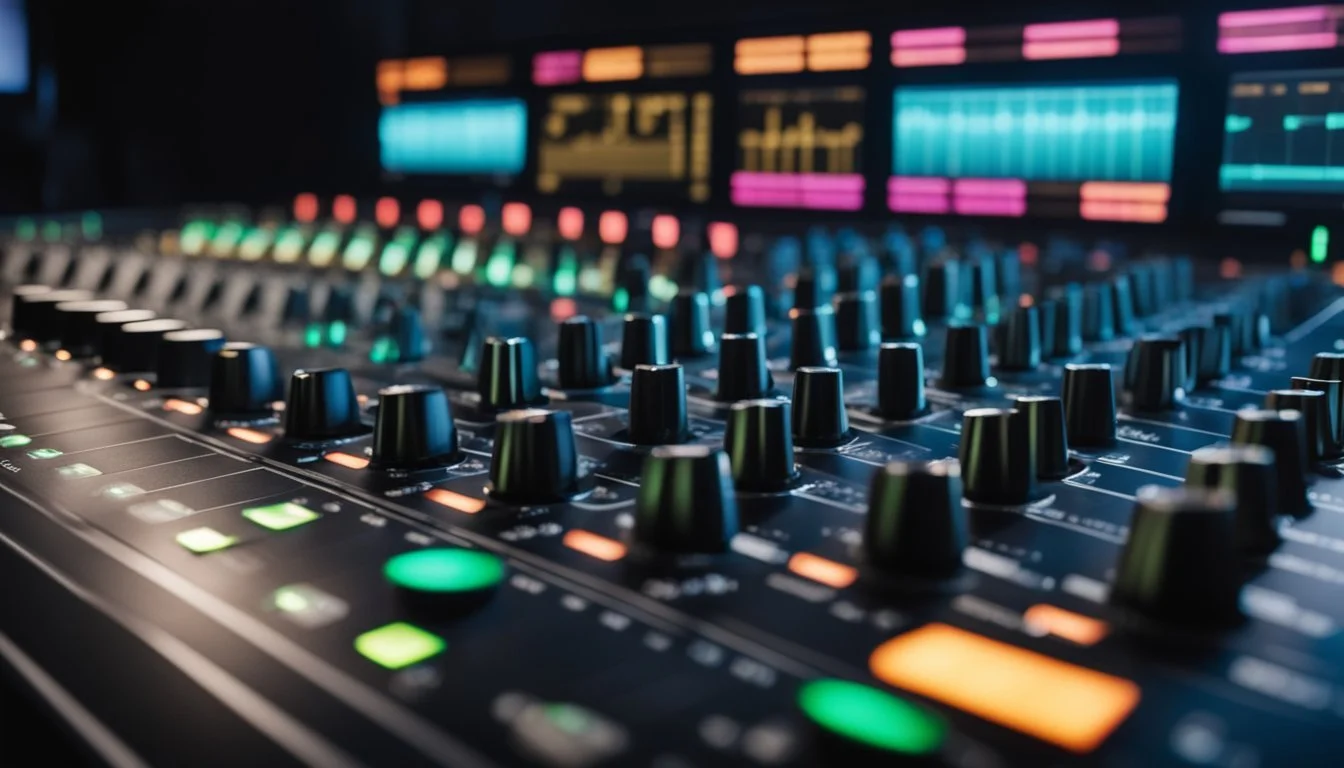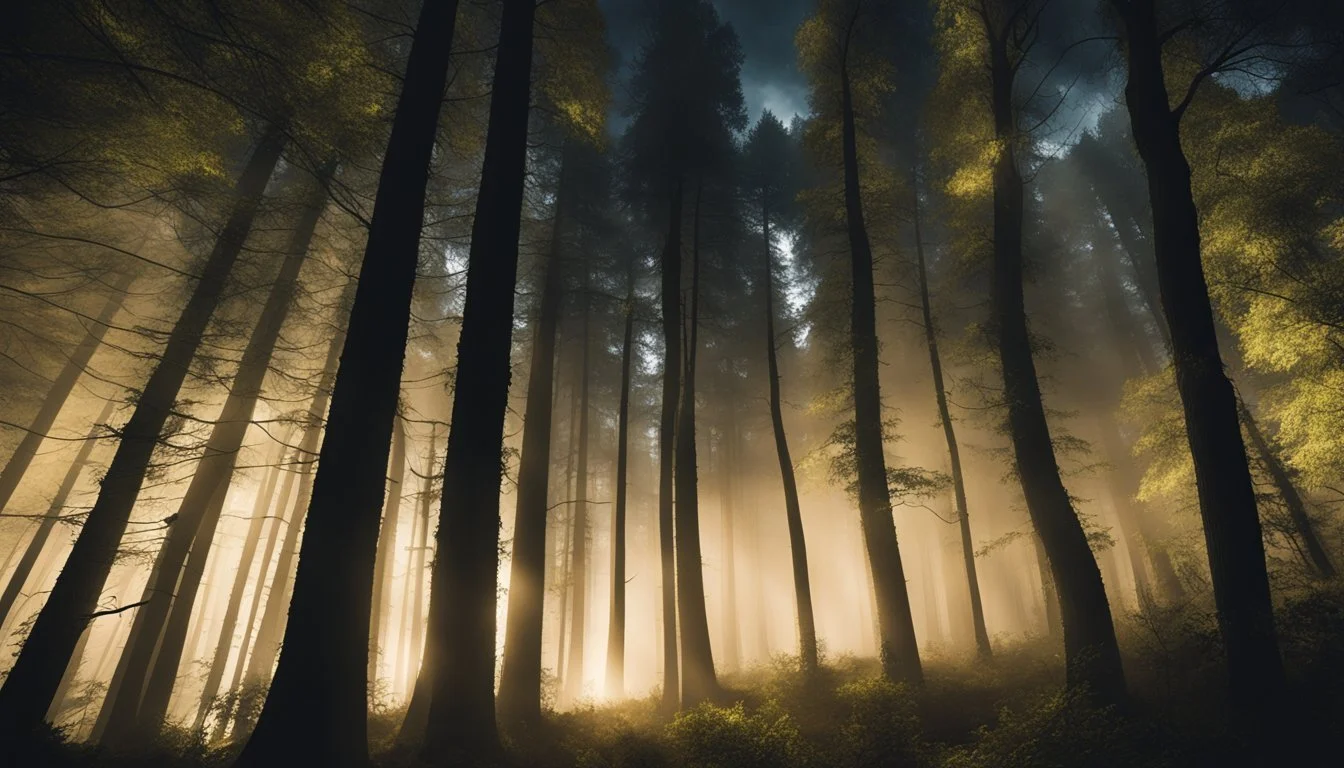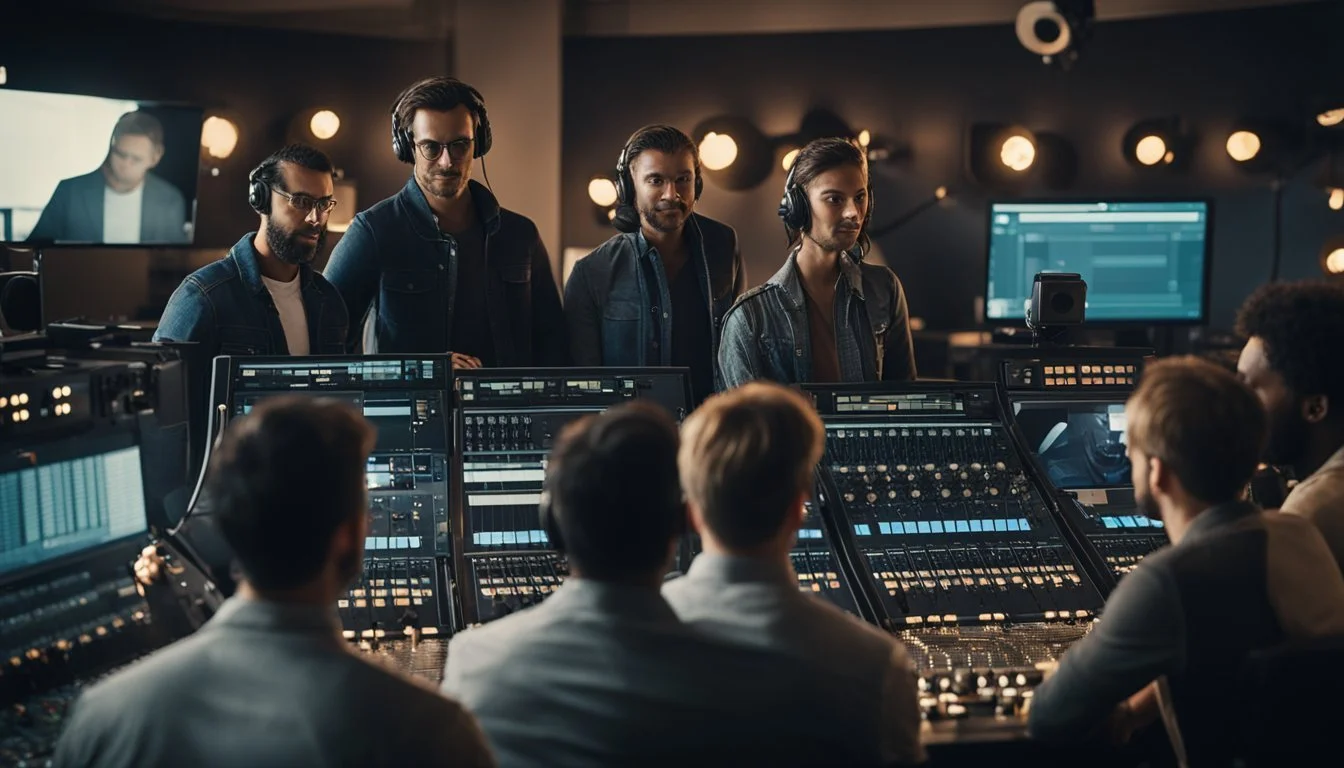The Power of Sound Design in Filmmaking
Enhancing the Cinematic Experience
Sound design is an often-underappreciated aspect of filmmaking that plays a crucial role in shaping the viewer's experience. By manipulating audio elements such as sound effects, dialogue, Foley, and music, filmmakers can significantly enhance the mood, atmosphere, and narrative depth of their films. When executed skillfully, sound design can transport audiences to different worlds, evoke powerful emotions, and add layers of meaning to visual storytelling.
A prime example of this is seen in movies like "A Quiet Place," where sound design is integral to the plot. The absence of sound creates a tense atmosphere that heightens the impact of every noise, transforming silence into a powerful storytelling device. Whether it's the ambient sounds that make a world feel alive or the precise timing of effects that make scenes unforgettable, the art of sound design is indispensable in modern cinema.
From the roaring dinosaurs in "Jurassic Park" to the iconic lightsaber hum in "Star Wars," sound design has shaped some of the most memorable moments in film history. These auditory elements, whether boisterous or subtle, anchor the audience in the film’s universe, making every story more immersive and engaging.
Fundamentals of Sound Design
Sound design is a critical aspect of filmmaking that enhances the narrative and emotional impact of a film. Key components include defining the term, understanding its historical development, and breaking down the elements that make up a film’s soundtrack.
Defining Sound Design
Sound design involves the creation and management of auditory components within a film. It goes beyond basic sound recording to include the artistic process of designing audio elements that enhance the story.
This includes dialogue, sound effects (SFX), and diegetic and non-diegetic sounds.
The role of a sound designer can also encompass manipulating sounds to create a specific atmosphere or emotion. Digital Audio Workstations (DAWs) are essential tools that help in the post-production process.
History and Evolution
The history of sound design dates back to the early days of cinema. Initially, live music or simple sound recordings accompanied silent films. With the advent of sound in cinema, films began to integrate synchronized dialogue and sound effects.
As technology evolved, so did the techniques and tools available to sound designers. Innovations such as multi-track recording and digital audio editing revolutionized the field, allowing for more complex and layered soundscapes.
Today, sound design has become an inseparable part of the filmmaking process, contributing significantly to a film’s immersive experience.
Components of a Soundtrack
A film's soundtrack consists of various components, each playing a distinct role:
Dialogue: The spoken words of the actors. It is often recorded on set and refined in post-production.
Sound Effects (SFX): These are artificially created or enhanced sounds that enhance the realism or surrealism of a scene.
Foley: Foley artists recreate everyday sounds to add depth to the audio experience.
Music: Both diegetic (within the film's world) and non-diegetic (background or mood music) tunes help convey emotions and themes.
Each component is meticulously crafted to ensure it contributes effectively to the film’s narrative and the viewers' experience.
The Role of Sound in Storytelling
Sound design in filmmaking is a crucial element that enhances emotional impact, creates immersive atmospheres, and aids in character development. It focuses on the auditory experiences that elevate visual storytelling to a whole new level.
Emotional Impact
Sound plays a pivotal role in stirring emotions. A well-designed soundscape can evoke fear, joy, sadness, or excitement. For instance, the spine-chilling sound effects used in horror films amplify suspense and anxiety. Music scores can also bring a tear to the eye during emotional scenes.
The right combination of music and sound effects can manipulate the audience's feelings, making them feel more connected to the story. This emotional connection is what often makes a film memorable and impactful.
Creating Atmospheres
Crafting the right atmosphere through sound is vital. Ambient noises like the rustling of leaves or distant city sounds can place the audience directly into the story’s setting. This environmental sound design helps to establish the time, location, and mood of a scene without the need for visual cues.
In science fiction films, for example, the sounds of futuristic gadgets and alien worlds create a believable and immersive experience. The atmosphere created by sound design can make fantastical scenarios feel genuine and grounded.
Character Development
Sound is not just about the environment; it also builds characters. Unique sound motifs or themes can be associated with specific characters, helping to define their identity or emotional state. For instance, a heroic character might have a triumphant musical theme that plays during pivotal moments.
Dialogue and voice modulation also play a key role. Subtle changes in a character’s voice can indicate their psychological state or development over the course of the film. These auditory cues add layers to character portrayal that visuals alone cannot achieve.
Technical Aspects of Sound Design
Sound design in filmmaking involves multiple technical processes that ensure the audio elements enhance the visual storytelling. These processes include recording techniques, sound editing, and mixing and mastering.
Recording Techniques
Recording techniques are fundamental to capturing high-quality sound. Onset recording captures dialogue using boom microphones and lavalier mics to ensure clarity. Field recording gathers ambient sounds, such as natural environments or urban settings, which add realism to scenes.
Foley artists create sound effects manually, replicating everyday noises like footsteps and rustling fabric, adding authenticity. High-fidelity equipment, such as condenser microphones and digital audio recorders, is essential for clear, precise audio capture.
Different microphones serve varied purposes. Shotgun microphones are often used for directional sound, while omnidirectional microphones capture ambient sounds.
Sound Editing
Sound editing involves manipulating audio elements to fit the narrative. Editors work with Digital Audio Workstations (DAWs) to sync sound with visuals and layer multiple audio tracks. This process includes cutting, splicing, and rearranging sounds to match the action on screen.
Audio enhancement effects like equalization and compression are used to improve sound quality. Dialogue is cleaned up to remove background noise, and sound effects are edited to fit the timing and rhythm of the scene.
Creating soundscapes—complex audio environments—helps immerse the audience. Combining diegetic sounds (originating from the scene) and non-diegetic sounds (external sounds like a film score) is crucial to effective sound editing.
Mixing and Mastering
Mixing balances the various audio elements into a cohesive sound experience. The mixing engineer ensures that dialogue, sound effects, and music do not overpower one another. Volume levels, panning, and effects like reverb are adjusted to create spatial depth and clarity.
Mastering is the final step, where the mixed audio is polished for consistency across different playback systems. This process includes normalizing audio levels and fine-tuning frequencies.
Surround sound technology is often employed to enhance the immersive experience. The goal is to ensure that the final sound mix is dynamic and impactful, whether heard in a theater or on a home entertainment system.
Sound Design in Different Genres
Sound design adapts to the genre of the film, shaping the atmosphere and emotional impact. It enhances the narrative, making tension more palpable in horror, authenticity stronger in documentaries, vibrancy heightened in animation, and excitement intensified in action.
Horror and Suspense
In horror and suspense films, sound design is integral to building tension and fear. The use of silence contrasts dramatically with sudden noises, amplifying jump scares and unsettling moments. Minimalist sound effects can make mundane sounds, such as footsteps or creaking doors, extremely menacing.
Sound designers like Erik Aadahl and Ethan Van der Ryn, known for their work on "A Quiet Place," use the absence of sound to create suspense, making the few noises that do occur incredibly impactful. This strategy of combining silence and well-timed sounds creates an intense atmosphere that keeps viewers on edge.
Documentaries
For documentaries, sound design aims to enhance realism and immerse the audience in true events. Accurate ambient sounds, such as environmental noises and subtle background music, are crucial for maintaining authenticity. These elements bring the viewer closer to the subject matter, creating a deeper emotional connection.
Unlike in fictional genres, most sounds in documentaries are diegetic—originating from the film's environment. Documentaries may also use narration and interviews, complemented by carefully chosen background sounds to add layers to the storytelling.
Animation
Sound design in animation is vibrant and exaggerated to match the visual style. Foley effects are often used to create unique and whimsical sounds for characters and settings. These sounds bring animated worlds to life, making them feel tangible and engaging.
In cartoons like "Looney Tunes," sound effects are critical to comedic timing and character actions. The exaggerated nature of animation allows sound designers to be creative, employing zany and exaggerated noises that wouldn't fit in live-action films. This helps in capturing the fantastical elements and lively spirit of animation.
Action and Adventure
Action and adventure films rely heavily on dynamic sound design to enhance the excitement and intensity of scenes. Explosions, gunfire, car chases, and fight sequences are crafted with detailed sound effects that add a visceral punch. The sound design works in tandem with visual effects to immerse the audience in high-octane moments.
In films like "1917," sound designers meticulously recreate the ambiance of war, using everything from distant artillery to the crunch of footsteps on rubble. These layers of sound build a realistic and immersive experience, making the audience feel as though they are part of the scene.
The Sound Designer's Toolkit
Sound design in filmmaking involves a range of tools and techniques to create an immersive auditory experience. These tools include specialized software, extensive sound libraries, and the art of Foley.
Software and Hardware
Sound designers rely heavily on Digital Audio Workstations (DAWs) like Pro Tools, Ableton Live, and Logic Pro. These software platforms are essential for editing, mixing, and creating sound effects.
Plugins such as reverb, EQ, and distortion further enhance the flexibility of these workstations. High-quality microphones, audio interfaces, and monitors are crucial hardware components. Field recorders enable capturing ambient sounds outside the studio.
Together, these tools allow sound designers to manipulate and create complex soundscapes that drive the narrative and evoke emotions in film.
Sound Libraries
Sound libraries provide an invaluable resource for sound designers, containing pre-recorded sounds and effects. Databases like the BBC Sound Effects Library and Soundsnap offer thousands of audio clips for various scenes and effects.
These libraries save time and ensure consistency in sound quality. Some designers also create custom libraries tailored to specific projects, adding a unique flavor to the film’s audio environment.
By utilizing these resources, sound designers can efficiently enrich the film’s auditory dimensions.
Foley Artistry
Foley artistry involves creating and recording everyday sound effects that are added to films to enhance audio realism. Skilled Foley artists reproduce sounds such as footsteps, door creaks, and rustling fabric in sync with the on-screen action.
This is often done in a Foley stage, a specialized studio equipped with various surfaces and props. Techniques involve using unconventional items to replicate the sound of specific objects or actions. For instance, crushing celery might mimic the sound of breaking bones.
Foley artistry is essential for making the on-screen world believable and engaging for the audience.
Collaborative Processes
Collaboration is integral to sound design in filmmaking, enhancing the creative process through steady teamwork. The interaction between directors and various departments is crucial for achieving a cohesive auditory experience.
Working with Directors
Sound designers and directors must establish a close working relationship. This begins in pre-production, where they discuss the film's overall auditory vision. They work together on spotting sessions, identifying key moments where sound will play a pivotal role.
Effective communication is essential for translating the director's ideas into soundscapes. Directors provide insights into the narrative, while sound designers offer expertise in how to best achieve those effects. They might experiment with different sounds and approaches to find the perfect fit for the director's vision.
Interdepartmental Collaboration
Collaboration extends beyond directors to the entire filmmaking team. Sound designers often work closely with editors, cinematographers, and production designers. This ensures a seamless integration of visual and auditory elements. For instance, cinematographers might adjust shot compositions to accommodate certain sound effects, while editors ensure that the timing of cuts aligns with audio cues.
Regular meetings and feedback loops are pivotal. Tools like DAWs (Digital Audio Workstations) facilitate this process, enabling multiple departments to work on synchronized timelines. Coordination between departments enhances both the technical and creative facets of sound design, resulting in a more immersive film experience.
Sound Design in Post-Production
Sound design in post-production involves a complex process of editing, dubbing, and voice synchronization. These elements ensure the audio aligns perfectly with the visual narrative.
Editing and Dubbing
Editing the audio track is essential. This step includes cleaning up dialogue recordings, removing unwanted noise, and rearranging segments for clarity.
Dubbing, or "automated dialogue replacement" (ADR), is where actors re-record their lines in a studio. This ensures the dialogue is clear and matches the performance captured on film. Dubbing often involves adjusting the timing and pitch to blend seamlessly with the original track.
Both editing and dubbing require meticulous attention to detail.
ADR and Looping
ADR is a critical technique used to improve or replace sound. This process usually occurs after initial shooting. Actors watch their original performances and rerecord lines to enhance audio quality or alter dialogue. This can address issues like poor sound capture or changes in the script.
Looping is another related process where background actors and sounds are added to create a sense of realism. These can include ambient noises, character movements, or crowd murmurs. Looping helps in building an immersive environment that matches the scene's setting.
The Future of Sound Design
The future of sound design in filmmaking is shaped by advancements in technology and the growing integration with interactive media. Emerging technologies like artificial intelligence and 3D audio are revolutionizing the way sound is created and experienced, while interactive media is opening new avenues for immersive storytelling.
Emerging Technologies
Emerging technologies are redefining sound design with innovative tools and methods. Binaural audio, for instance, uses two microphones to produce a three-dimensional sound experience, mimicking natural hearing. This technology is particularly beneficial in creating immersive soundscapes for film and virtual reality.
Artificial Intelligence (AI) and machine learning are also making significant strides. AI can aid in automating mundane tasks such as noise reduction and dialogue cleanup, freeing up sound designers to focus on creative endeavors. Machine learning algorithms are capable of generating realistic sound effects based on large datasets, enhancing the efficiency and quality of sound design processes.
Digital Audio Workstations (DAWs) continue to evolve, integrating more sophisticated features and user-friendly interfaces, allowing designers to manipulate audio with increased precision. These advancements enable the crafting of more dynamic and emotionally resonant auditory experiences.
Interactive Media
Interactive media, including video games and virtual reality, is becoming a pivotal arena for sound design. In these mediums, sound must adapt dynamically to user interactions, requiring more complex and responsive auditory systems.
Adaptive audio engines are crucial in this context. These engines respond to player movements and decisions, generating soundscapes that change in real-time. This level of interactivity enhances the immersive experience, making users feel more engaged within the virtual world.
Ambisonics is another key innovation. Unlike traditional audio, ambisonics captures the full sphere of sound, offering a more natural and immersive sense of space. This is instrumental in creating believable and engrossing environments in virtual reality experiences.
As interactive media grows, the demand for skilled sound designers capable of leveraging these technologies will also rise, further pushing the boundaries of what is possible in audiovisual storytelling.
Ethical Considerations in Sound Design
Sound designers must balance artistic expression with ethical responsibility. A key ethical concern is the authenticity of sounds. Using real-world sounds accurately ensures that the audience receives a truthful representation.
Cultural Sensitivity plays a crucial role. Designers must avoid using sounds that could misrepresent or stereotype cultural groups. This includes being mindful of regional accents, music, and traditional sounds.
Plagiarism is a serious issue. Sound designers should create original sounds or obtain proper licenses for existing audio materials. This respects the intellectual property rights of other artists.
Privacy considerations arise when recording ambient sounds. Sound designers need to avoid capturing private conversations or identifiable voices without consent. This respects individuals' privacy and maintains ethical standards.
Regarding accessibility, sound designers can enhance inclusivity by considering the needs of the hearing impaired. Implementing clear audio cues and supporting descriptive audio tracks ensures that films remain accessible to a wider audience.
Manipulation of emotions through sound must be done ethically. While it's legitimate to evoke emotions, designers should avoid using sound to manipulate the audience in misleading or coercive ways.
By adhering to these ethical considerations, sound designers not only enhance their craft but also uphold industry standards and respect their audience.
Case Studies
An exploration of how sound design elevates film will provide valuable insights through notable examples. Examining iconic films and award-winning achievements illustrates the craft's significance and innovation.
Iconic Films and Their Soundscapes
A Quiet Place exemplifies a movie where sound design shapes the narrative. Directed by John Krasinski, silence becomes a pivotal character. The minimal use of sound amplifies tension, making every noise significant. Erik Aadahl and Ethan Van der Ryn's sound design immerses viewers in a world where sound equals survival.
In Star Wars: Return of the Jedi, foley effects contribute to the film's immersive universe. The Ewoks' unique sounds, crafted meticulously, add to the vivid portrayal of their world. These soundscapes create a compelling auditory experience alongside the visual spectacle.
Award-Winning Sound Design Breakdowns
Ken Burns, in his MasterClass, emphasizes the importance of spotting for sound in documentaries. This method focuses on using aural tools to tell compelling stories. His approach has received high acclaim, teaching filmmakers to harness sound's full potential to engage their audience.
Sound design in The Art of Making Silence Speak shows precision in creating artificial sound effects. Carefully selected and layered foley noises enrich the auditory environment, highlighting the sound designer's creativity. The thoughtful recreation of ambient noises contributes to a film's authenticity and emotional impact.
Through these case studies, the power of sound design is evident in how it transforms the cinematic experience, making films more engaging and memorable.







